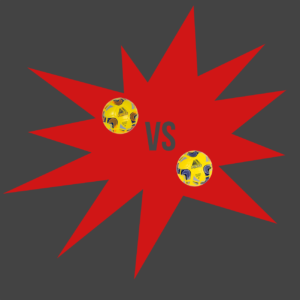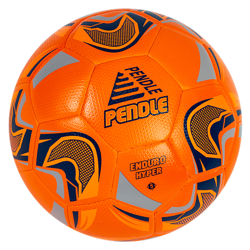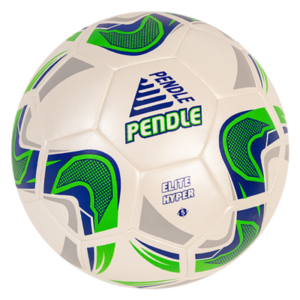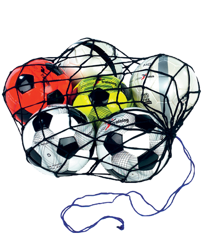Last Updated on: 11th October 2024, 04:25 pm

What would football be without the ball? A load of feet, I guess. So, it’s probably unnecessary to say that it’s an important part of your equipment. The FA have their own guidelines about quality and measurements, which you can find on their website. So, picking the right ball will be very important to your team’s performance. Far from being a simple decision, there are a few options that you need to decide between before you’re ready to go. Thankfully, we’re here with our handy guide to buying the right ball. Starting with deciding between a match football and a training football.
But surely the difference between a training ball and a match football is a simple one, right? You use one ball for training and the other for match days. Yes, on the surface the purpose and the price might seem like the only differences between the two. However, there is a little more to the issue than that. So, what are the differences? I’m glad you asked.
 Training Footballs
Training Footballs
- Typically made to medium or high quality, training balls are made of long-wearing materials. This means they will stand up to months of heavy use in practice sessions.
- These footballs usually have a thinner layer of foam, which means it is harder to the touch. The extra weight makes it ideal for developing your team’s skills.
- They typically use a bladder that adds to its stiff feel and gives it an extra level of longevity.
- Training balls are normally designed to be used on a variety of surfaces and in all weather conditions. This accounts for the minor compromises in the football’s performance. In order to make them multi-purpose, they have a slightly lower performance level.
 Match Footballs
Match Footballs
- Match footballs are all about providing top quality and great performance. However, they don’t have the same ability to stand up to a lifetime of heavy use.
- In order to get the best performance, they are lighter, which means months of hard practice might not leave it in the best state. Instead, match footballs can handle short periods of intense use.
- These footballs usually feature a thicker layer of foam for added protection. This makes it softer and lighter.
- These balls are all about the performance they offer. When struck correctly, they offer the best possible flight. This allows the football to bend, dip, or rise through the air perfectly.
- They allow a player to have ultimate control over every touch of the ball. It offers the ultimate performance when it comes to passing, shooting, and receiving.
- Match footballs were designed with the focus on getting the best quality and greatest performance. These balls are typically more expensive because of the extra precision that goes into creating them.
 Conclusion
Conclusion
Which football is the right one for you? Well, if you’re looking for a ball to have a quick kickabout with a friend or something to take to your practice sessions, we’d recommend a training ball. It will be your loyal companion through the toughest of workouts and will help you develop your skills. However, if you need something to bring to your next game, then you’ll want a different kind of football.
Luckily, Pendle has a wide variety of both Training Footballs and Match Footballs. Take a look at our own range and our handpicked selection of Mitre’s very best. All of our footballs are made to industry-leading standards and are at prices you won’t be able to resist. Don’t forget, to get the best out of your footballs you need to keep them well looked after. So, whilst you’re here, why not check out our Ball Pumps & Accessories too? We have everything we need to keep your footballs looking as good as new.

